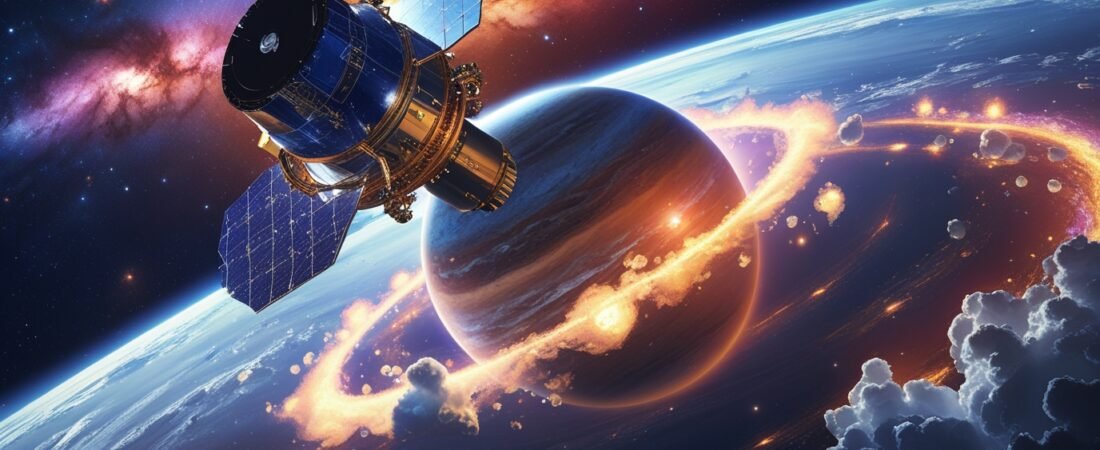Listen on Spotify
Listen on Apple Podcasts
Is Humanity on the Verge of Contact? The James Webb Telescope’s Shocking Discovery Sparks Alien Life Debate
A groundbreaking revelation from the James Webb Space Telescope (JWST) has reignited the age-old question: Are we alone in the universe? Recent data reveals the presence of organic molecules and atmospheric markers on an exoplanet thought to harbor Earth-like conditions. This discovery has sparked debates among scientists, enthusiasts, and skeptics alike, potentially bringing humanity closer than ever to uncovering extraterrestrial life.
The Discovery
The James Webb Telescope, known for its ability to peer into the farthest reaches of the cosmos, has identified chemical signatures on K2-18b, an exoplanet located 120 light-years from Earth. These markers include dimethyl sulfide (DMS), a molecule known to be produced by living organisms on Earth. Coupled with traces of methane and carbon dioxide, the findings strongly suggest the presence of biological activity.
The exoplanet resides in its star’s habitable zone, where conditions might support liquid water—a key ingredient for life. While this discovery doesn’t confirm alien life, it provides compelling evidence that K2-18b could be a candidate for further exploration.
The Debate: What Does It Mean?
The discovery has ignited global discussions about the implications of such findings.
A Scientific Breakthrough
Astrobiologists see this as a watershed moment. The detection of DMS and other molecules in an exoplanet’s atmosphere is unprecedented and represents a new frontier in the search for life beyond Earth. “We may not be alone, and this discovery is a monumental step toward proving it,” says Dr. Lena Roswell, an astrophysicist at NASA.
Skeptics Weigh In
Not everyone is convinced. Critics argue that the presence of these molecules doesn’t necessarily equate to life. Abiotic processes, or non-biological chemical reactions, could also produce similar markers. Skeptics urge caution, emphasizing the need for follow-up observations to rule out alternative explanations.
The James Webb Telescope: A Technological Marvel
The James Webb Telescope is at the cutting edge of space exploration, capable of detecting molecular signatures in exoplanet atmospheres with unmatched precision. Its infrared technology allows scientists to study distant worlds and analyze their chemical compositions, a feat unattainable by previous telescopes.
The Implications for Humanity
The discovery of potential biosignatures on K2-18b raises profound questions about our place in the universe.
Philosophical and Cultural Reflections
What would it mean for humanity to confirm alien life? Would it unite us or deepen divisions? The discovery could reshape our understanding of existence, prompting reevaluations of cultural, religious, and philosophical beliefs.
Scientific and Technological Advancements
Discovering extraterrestrial life would likely spur advancements in technology and exploration. From designing better space telescopes to developing interstellar probes, humanity’s drive to explore the cosmos could reach unprecedented heights.
The Search Continues
While the findings on K2-18b are tantalizing, they are just the beginning. The James Webb Telescope is slated to study hundreds of exoplanets, each with unique potential for habitability. Follow-up missions could include sending probes or even developing the technology for direct imaging of these distant worlds.
Conclusion
The James Webb Telescope’s discovery on K2-18b is a pivotal moment in humanity’s search for extraterrestrial life. While questions remain and skepticism persists, the presence of organic molecules in an exoplanet’s atmosphere opens the door to new possibilities.
As debates rage on, one thing is certain: Humanity stands on the brink of an era where the question of whether we are alone in the universe might finally be answered. Until then, we continue to gaze at the stars, driven by curiosity and the hope of discovering something extraordinary.

